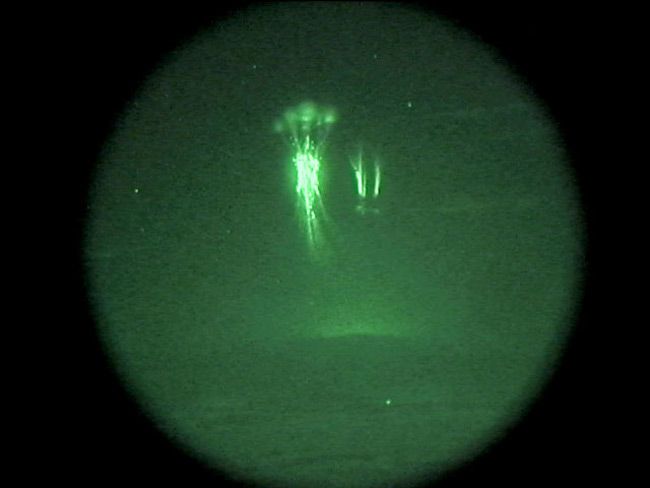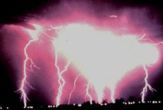Secret Sprites: Study Explains High-altitude Flashes

Lightning-inspired emissions dance high above thunderstorms and produce some of the most spectacular light shows nature has to offer.
The sprites, as they are known, rise as high as 50 miles into the atmosphere and last only milliseconds, so they are very difficult to study. Pilots who first spotted them were thought crazy by scientists who had never seen them. They were confirmed in 1989 when spotted from a space shuttle.
For years scientists weren't even sure what sprites were, so of course they did not understand how one formed. Researchers became divided. One side believed the phenomena were byproducts of strong lightning storms. The other group clung to a less popular theory that meteoric dust or gravity waves in the upper atmosphere might be the cause.
There has been little doubt in recent years that lighting was at the root of it all. Now, researchers believe they have solved the mystery of these lightning imps.
T-storms rule
Teams led by Steven Cummer of Duke University and Walter Lyons of FMA Research, Inc. have found evidence that sprites form during major lightning strikes. They gathered data on thunderstorms from across the United States during the summer of 2000, and showed that high intensity lightning charges are the key ingredient in sprite formation. The results were released yesterday.
"To make a sprite, you definitely need a strong electric field high above the thunderstorm," Cummer told LiveScience.
Sign up for the Live Science daily newsletter now
Get the world’s most fascinating discoveries delivered straight to your inbox.
Simulated storms provided by NASA computer animations helped confirm that weak lightning strikes don't make sprites, and atmospheric factors such as dust or gravity waves don't contribute much to the process.
Most sprites have been observed over the Midwestern United States, Cummer said, "because it is easy for US researchers to operate there." But they occur just about everywhere, with sightings in Japan, Brazil, Italy, Africa, and the Caribbean.
"But it takes a certain kind of lightning stroke to make a sprite, and lightning of this kind is more common in some areas than others," Cummer said.
Another mystery
The study cleared up another misconception about sprites - that they could only be born from positively charged lightning strikes. Up until recently, most sprites had been observed in the Midwest, where negatively charged lightning storms are generally not strong enough to produce a sprite.
"In the tropical regions, where storm meteorology is different, negative lightning can be strong enough," Cummer said. "The precise details of these meteorological differences are not really understood."
Sprites have cousins called elves, which are intense flashes of lightning that can light the night sky within a 62 mile (100 kilometer) radius. Both sprites and elves create strong electric fields and electromagnetic pulses that may interact with the Earth's ionosphere and magnetosphere.
These findings were detailed recently in the Journal of Geophysical Research-Space Physics.
The Electric Earth













